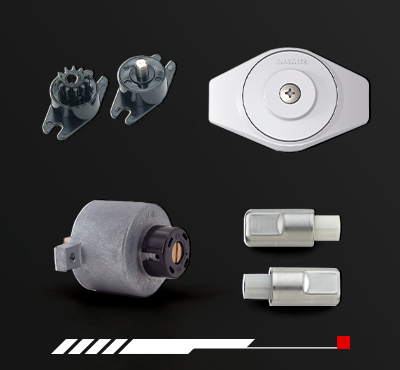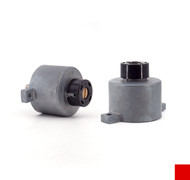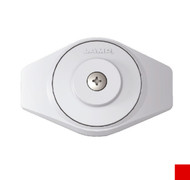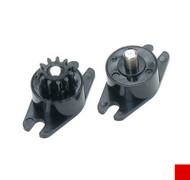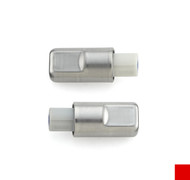
Torque Dampers
Precision Designed Hardware Components
Since 1930, Sugatsune has been a trusted source worldwide for precision-engineered original hardware solutions. From residential and commercial architectural and furniture hardware to industrial components for industries including food, medical equipment, transportation, and aerospace, you can find the right, unique solution to help build and show off your creations. Sugatsune America is AS9120 B and ISO9001; 2015 certified and distributes unique products in our effort to create convenience and satisfaction for people.
Explore torque dampers for cabinets and over 6,000 products available in the United States by visiting our digital resources, featuring extensive product literature and downloadable CAD files or contact our experts to find the right solution to your creative challenges.
FAQs
What are the different types of torque dampers, and how do they work?
Torque dampers are engineered to control and slow movement of doors and panels to avoid slamming closed. We manufacture several types of torque dampers. Each has a different mechanism for providing controlled resistance:
- Barrel torque: Often cylindrical and they use a viscous fluid to provide a smooth and continuous damping force.
- Adjustable vane torque: These feature a rotating vane inside a fluid-filled chamber and have an adjustable damping force for fine-tuning depending on the weight or size of the application.
- Disk torque: These use the friction created by multiple disks. They rotate against each other to generate resistance. Known for being compact and ideal for smaller devices.
- Rotary torque: A broad category of dampers that controls rotational motion. You can find these in everything from glove compartments to appliance lids.
Selecting the right damper means understanding these types. You want a smooth and controlled experience. Factor in the damping force, the need for adjustability, and available space when specifying or sourcing torque dampers.
What are the primary torque damper components, and what materials are they made from?
The core torque damper components are designed to be durable and long-lasting. The main components are:
- External housing (body): Provides a rigid and protective enclosure for internal parts.
- Rotor: The moving component that creates the damping effect. Often, a simple vane or a set of disks is used. It can even be a specialized shape depending on the damper type.
- Damping medium: Usually a highly viscous fluid like silicone oil, that is chemically stable and resists temperature changes.
A specialized seal of silicone or rubber keeps the oil from leaking. These parts all work in concert to translate the door/lid/panel’s rotation into a fluid and controlled movement. High-quality materials help make sure the damper performs over tens of thousands of cycles (especially with no degradation in performance).
What are the typical torque damper applications and features?
Torque dampers are used to control motion. They usually prevent the noise and impact that comes with a door or lid slamming shut. There is a wide range of torque damper applications and features. For example, in washing machine lids and refrigerators, torque dampers ensure gentle and quiet closures. In a car or truck, these dampers help glove compartments and sunglass holders open and close smoothly. That’s critical for a premium feel. For furniture and cabinets, dampers prevent doors and drawers from slamming. That keeps fingers from getting injured. Soft-close functionality is often associated with luxury or higher-end furniture and homes.
Position control and durability are also two vital characteristics of torque damper applications. Holding a door or lid at any angle is often needed for convenience and safety. Dampers must be durable enough to function as expected for 10,000+ cycles. If you want to add quality and sophistication to your product or in a space you’re drafting specifications for, consider incorporating torque dampers. They achieve smooth and controlled (and quiet) motion.

